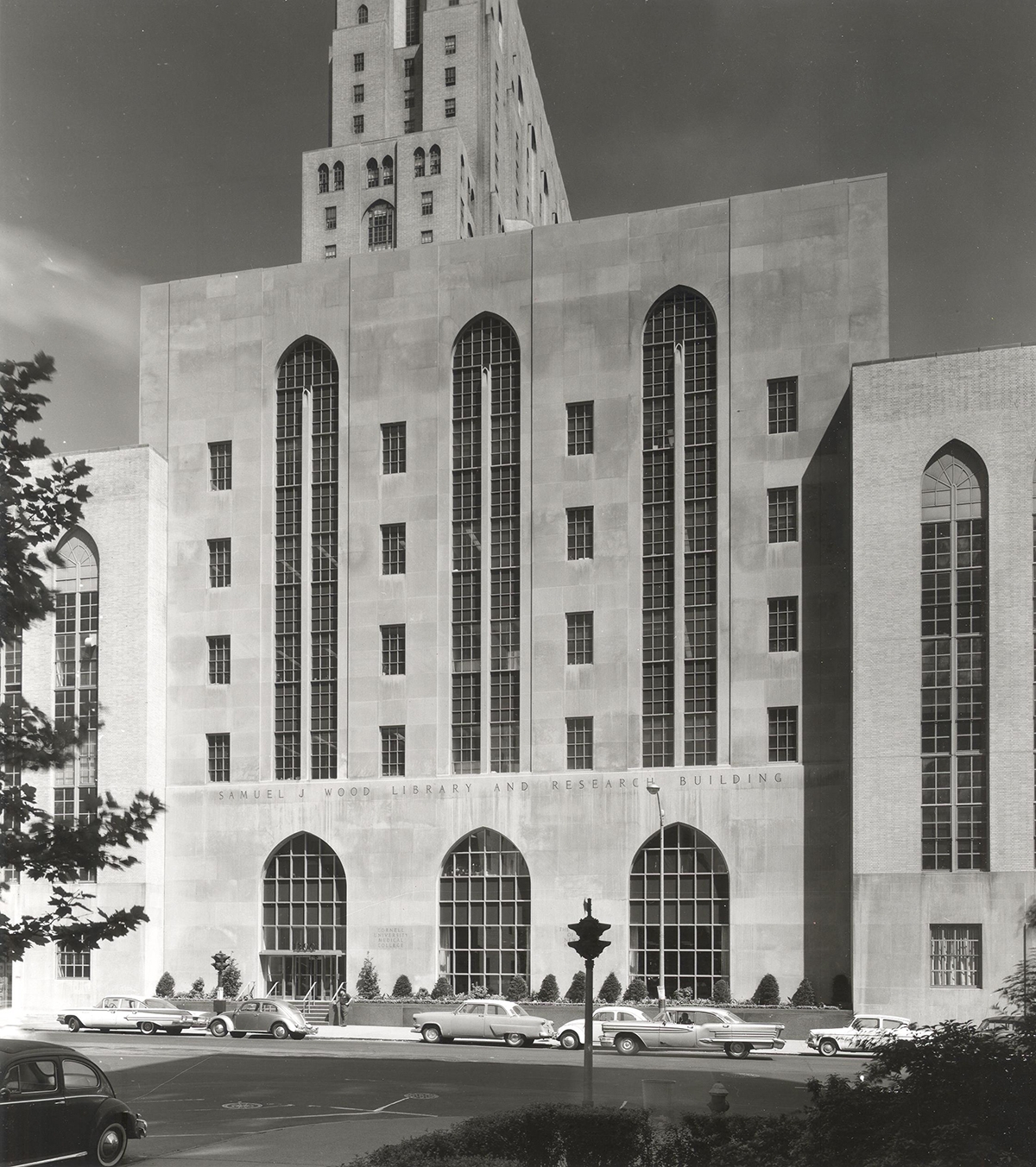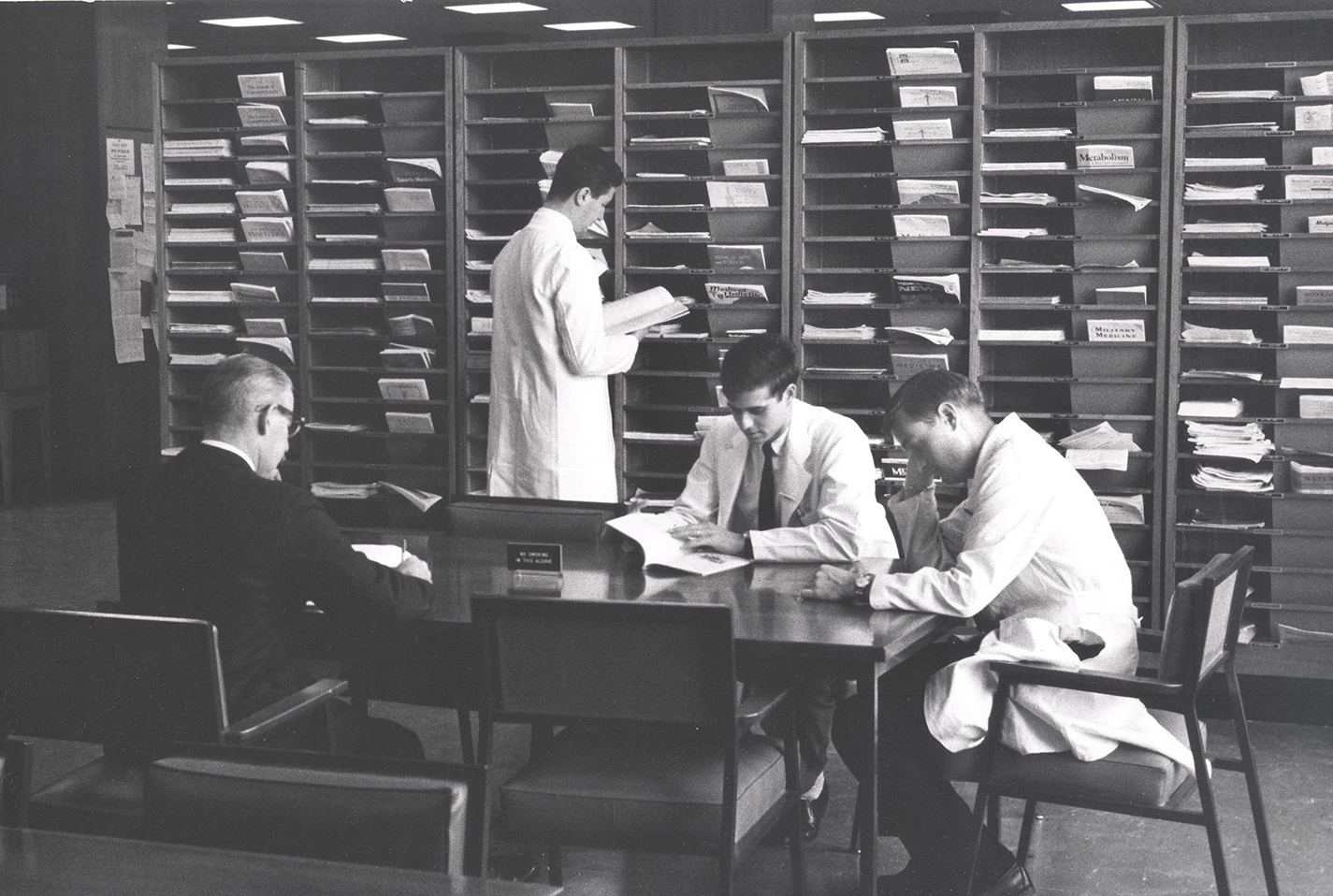Weill Cornell Medical College is renovating the Samuel J. Wood Library/C.V. Starr Biomedical Information Center just as the library marks its 50th anniversary.
Construction is underway to create a 24-hour study room as well as a collaboration room equipped with video conferencing technology — updates that will modernize the library for 21st century medical education, said library Director Colleen Cuddy. The 24-hour study room is expected to open next week, with the remaining construction completed by the end of the month.

Weill Cornell Medical College opens the Samuel J. Wood Library and Research Building on Oct. 17, 1962. Here is an exterior view of the new building. Photo credit: Gil Amiaga Courtesy of Medical Center Archives of NewYork-Presbyterian/Weill Cornell.
"We really want the library to be the intellectual hub for Weill Cornell Medical College," Cuddy said.
But as Weill Cornell looks to the future of medical education, it's also reminded of its history. It's been 50 years since the Samuel J. Wood Library and Research Building first opened, marking an important milestone for medical education at the Medical College.
The library history begins at the first Medical College building on First Avenue, according to Elizabeth Shepard, associate archivist at the Medical Center Archives of NewYork-Presbyterian/Weill Cornell. During its early years, the college didn't have one centralized library, but instead one for each department. That changed in 1920, when the Medical College hired its first librarian, Josephine Nichols, who expanded the Department of Pathology library into a more general medical library. In 1932, the Medical College moved to its current facility at the medical center; the library resided on the second floor of the C building, with library stacks on the first and two basement floors.
By the late 1950s, it was apparent that the Medical College library had outgrown its space. In an expansion of its medical education and biomedical research enterprise, the Medical College began construction on a new building in 1959. The building was funded with $1.7 million from the Wood Foundation, established in 1958 after the death of Samuel J. Wood, a realtor and president of the Wood's Business School; $1.3 million from the U.S. Public Health Service; and $600,000 from private donors.
On Oct. 17, 1962, the building was officially named the Samuel J. Wood Library and Research Building, with the library spanning the first and two basement levels and research laboratories and research laboratories on the third to seventh floors. The new building constructed a new main entrance and lobby for the Medical College — the entrance from York Avenue still used today — featuring cherry wood paneling and Italian marble floors.
The library continued to expand in both size and services in the years since, Shepard said. Such activities included adding stacks on the first floor and two basement levels of the D building, establishing and bolstering its computer services and launching in 1985 the Library Integrated System, a joint automation program for circulation, cataloguing and acquisitions for the Medical College, Memorial Hospital, Hospital for Special Surgery and Payne Whitney Library.
In 1989, the William Mildred Lasdon Building opened in the courtyard between the D and E buildings, and the library expanded into its first floor and two basement levels. Remodeled and modernized, the library was officially dedicated in 1990 as the Samuel J. Wood Library/C.V. Starr Biomedical Information Center and featured the sunken reading room, computer lab, administration and library staff offices, seminar rooms and stacks.
In recent years, the library unveiled and expanded services to meet the changing needs of the user community. A new mobile website was launched last year, and an online 24-hour chat service allows users to receive professional reference service anytime. The library is developing embedded librarians who will work with clinicians and researchers in their clinical settings or laboratories. The newly refurbished computer lab provides state-of-the-art facilities for instruction on information resources and the SmartDesk, staffed by IT and library support staff allows users to drop in the library for all their computing and information needs. The 24-hour study room and collaboration room complement these changes by offering students and others expanded education spaces.
Although the library has seen many changes in its 50 years, in some ways it remains the same, library officials said. While electronic collections and online services have expanded access beyond its walls, the library is still a place where students, faculty and staff can come to study, research and receive guidance and instruction on information resources.
"Libraries have undergone a radical shift in the past 50 years," Cuddy said. "The digitalization of collections has allowed us to revisit our library spaces and repurpose them in meaningful ways for the community. I hope that our users enjoy and utilize the new spaces."

